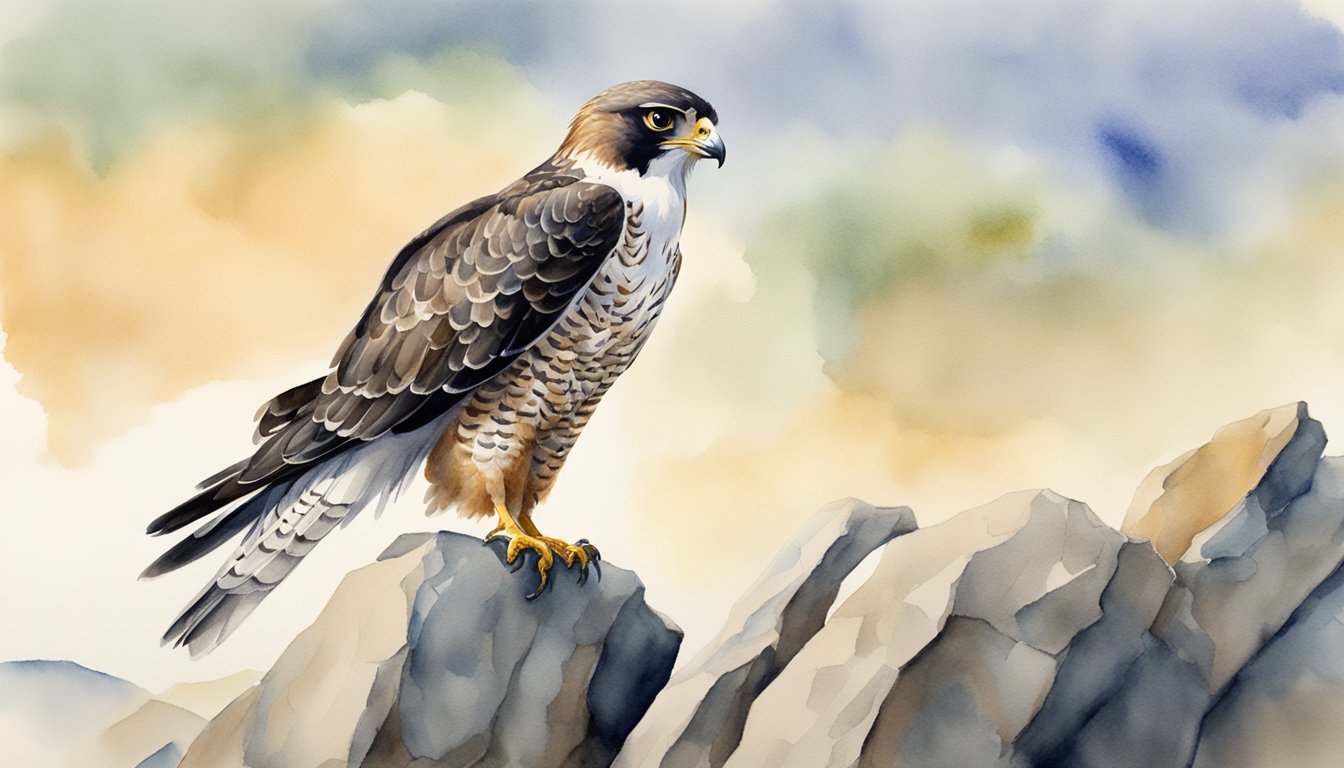Falcon Characteristics
Falcons are one of the most adept birds of prey, distinguished by their remarkable attributes that tailor them for a life of skilled hunting. Their characteristics are a testament to their evolutionary success across various habitats around the globe.
Physical Description
Falcons possess a robust physique characterized by a sharp, hooked beak and strong talons which are critical for catching and consuming prey. The size of these birds can vary widely among species, with body length typically ranging from 14 to 63 centimeters. Falcons feature pointed wings that can span up to 1.2 meters, aiding in their high-speed pursuits and agile aerial maneuvers. Sexual dimorphism is evident in falcons, with females generally being larger than males, a trait common among birds of prey. The plumage of falcons is also quite variable, helping them to blend into their surroundings, with colors and patterns that range from muted earth tones to more striking contrasts.
Species Overview
There are roughly 40 species within the genus Falco, which is part of the family Falconidae. These species are adept at adjusting to different ecologies, making falcons a widespread group found on nearly every continent. Some falcon species have adapted to forest environments, while others reside in mountainous regions or vast deserts. The peregrine falcon, for instance, is renowned for its exceptional widespread distribution and has been observed on all continents except Antarctica. This species is also celebrated for being the swiftest animal, capable of reaching speeds over 300 kilometers per hour (186 miles per hour) during its hunting stoop. In terms of appearance and behaviors, species may show specialized adaptations, such as the unique ‘tear marks’ seen in peregrine falcons, which are believed to reduce sun glare and improve their exceptional vision.
Falcon Behavior and Ecology

Falcons are captivating birds of prey known for their incredible hunting skills and significant role in wildlife ecology. They have fascinated humans for centuries, not only because of their speed, which makes them some of the fastest animals on Earth, but also due to their complex behaviors and adaptations that allow them to thrive in various habitats.
Diet and Hunting
Falcons are carnivorous raptors that mainly feed on other birds and small mammals. The diet of a falcon can include songbirds, rodents like mice, and occasionally larger prey such as rabbits. Specific species like the Peregrine Falcon, known as the fastest animal on Earth, have been recorded diving at speeds over 200 miles per hour to catch their prey mid-air. Falcons use their keen eyesight, exceptional speed, and agility to locate and capture their food, making them adept hunters.
Reproduction and Lifespan
Falcons are typically monogamous, often mating for life. They prefer to nest in high places, such as cliffs or tall structures, to keep away from predators. The breeding season sees these normally solitary birds come together to raise their young, known as chicks. The size of a falcon’s clutch can vary, but on average, they lay two to four eggs. As for their lifespan, falcons can live up to 15 years in the wild, although many do not survive their first year due to predation and environmental challenges.
Conservation Status
The conservation status of falcons ranges from least concern to critically endangered, depending on the species. Threats to falcons include habitat destruction, pollution, and illegal hunting. The Peregrine Falcon was once endangered in many areas due to the effects of DDT pollution, but thanks to conservation efforts including banning DDT and falconry breeding programs, its numbers have rebounded. Despite successful conservation stories, many species, like the Saker Falcon, still face significant threats in the wild, underscoring the need for continued conservation actions.

